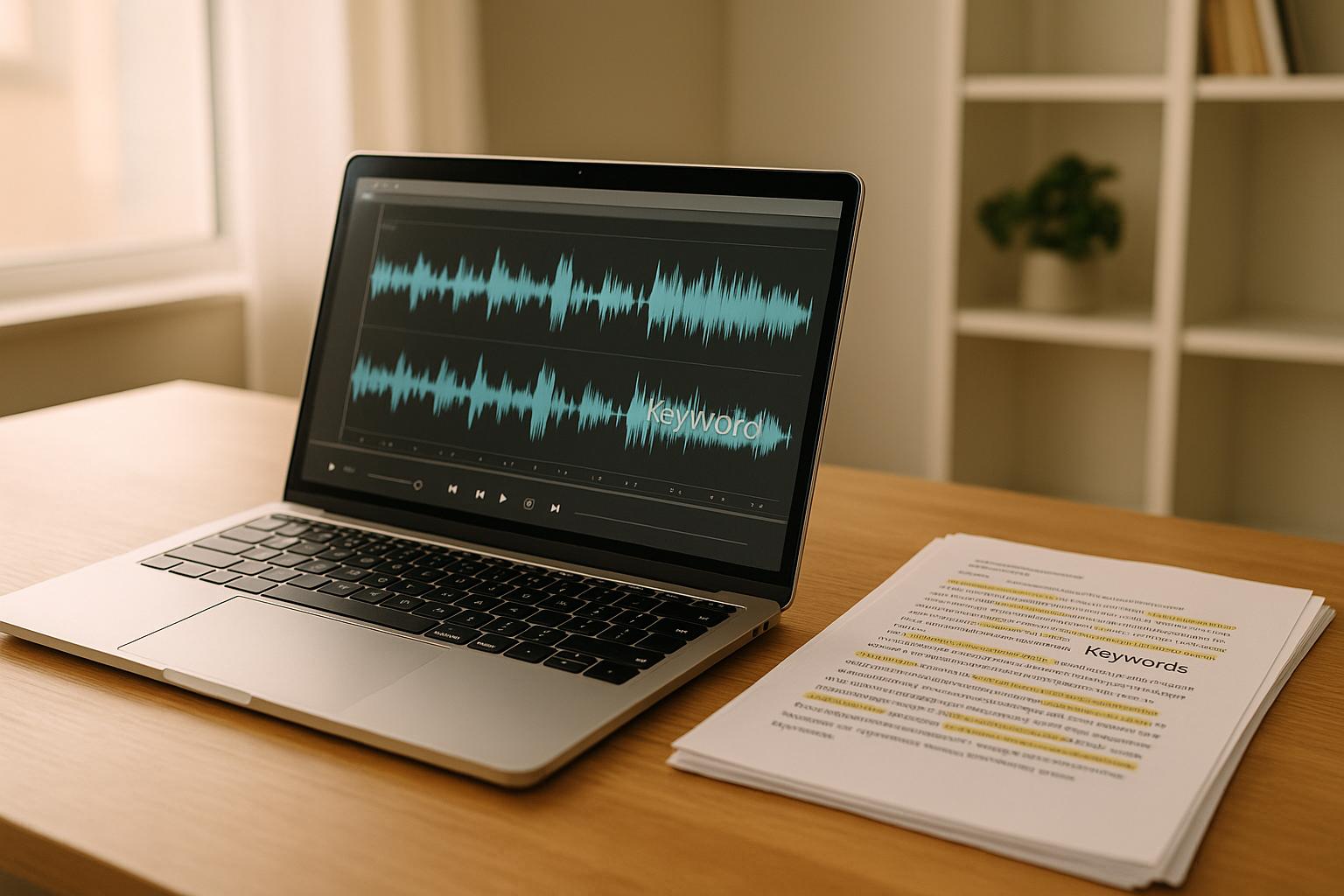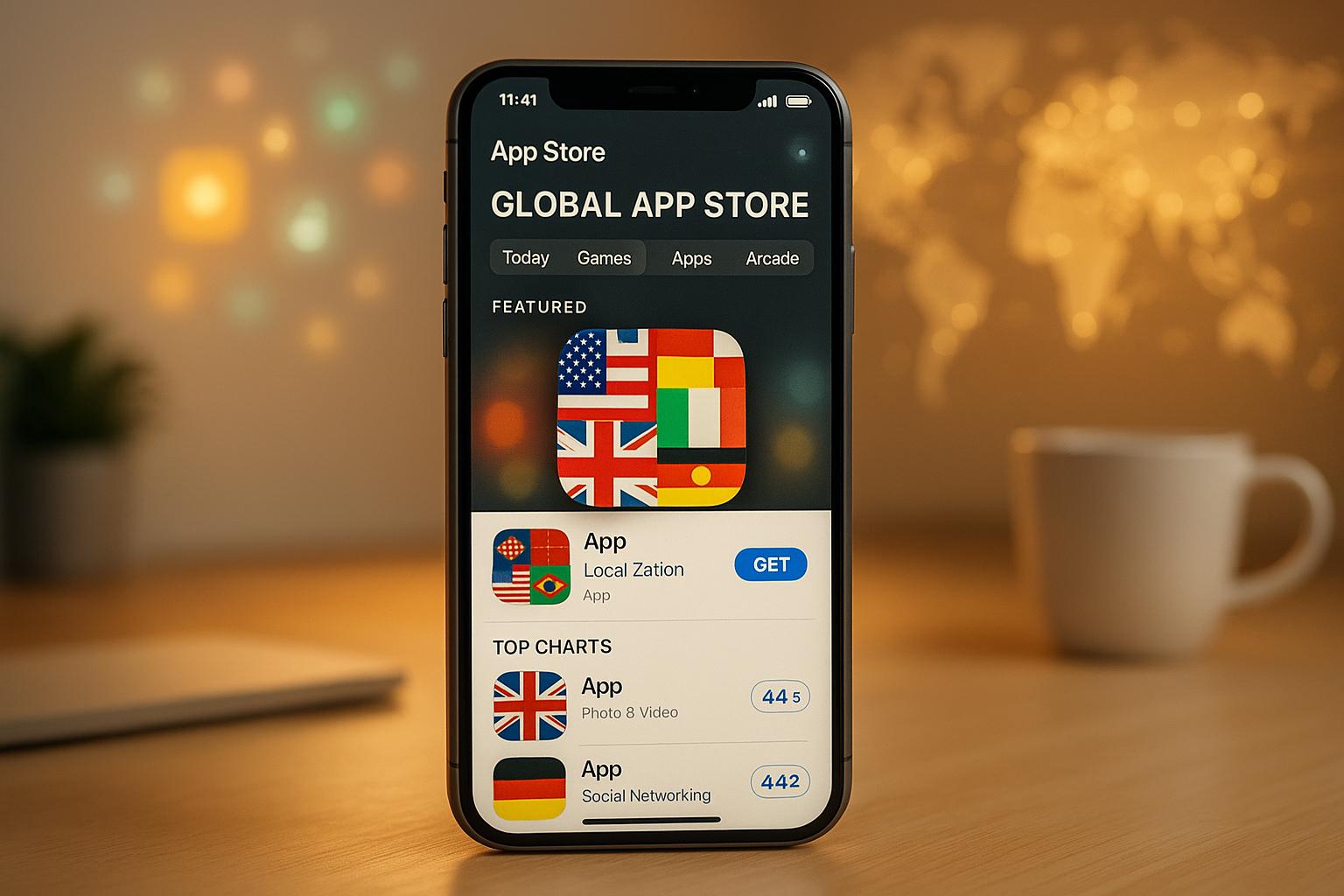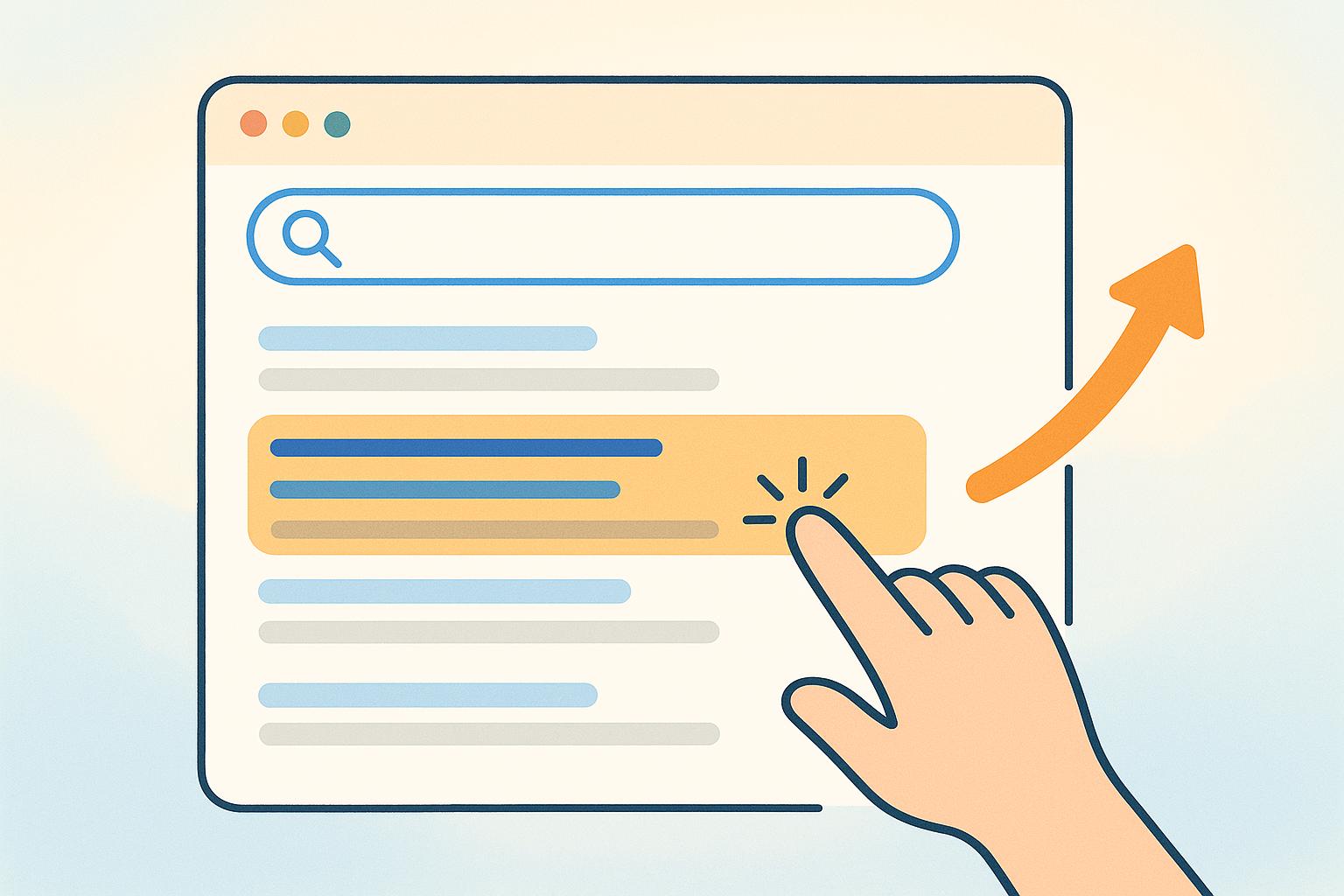Social media marketing in 2025 demands advanced analytics tools to keep up with 5.42 billion active users across 6.83 platforms monthly. With ad spending projected to hit $276.7 billion and organic reach on platforms like Facebook dropping by 15%, understanding how content performs is more critical than ever. This article highlights 20 tools that help marketers analyze performance, track audience behavior, and refine strategies across platforms.
Key takeaways:
- Real-time tracking: Essential for spotting trends and reacting quickly.
- Multi-platform integration: Centralizes data for better insights.
- Engagement metrics: Goes beyond likes to understand audience sentiment and behavior.
Top tools include Hootsuite, Sprout Social, Iconosquare, and Brandwatch, each offering unique features like sentiment analysis, competitive benchmarking, and cross-platform attribution. Pricing varies widely, from budget-friendly options like Buffer to enterprise-level solutions like Brandwatch. Choose based on your goals, platform needs, and team size.
7 Best Tools for Social Media Analytics
What to Look for in Social Media Content Analytics Tools
The tools you choose for social media analytics can significantly influence your success. With 65% of marketing leaders emphasizing the need to prove how social campaigns impact business goals directly, selecting the right platform isn’t just helpful - it’s essential.
You’ll want tools that go beyond surface-level metrics and provide insights you can act on. Experts agree that smooth integration with your existing social media channels and workflows is critical to ensure you’re tracking the metrics that align with your strategic goals. Features like data visualization, scalability for growth, and reliable customer support are also key. Let’s break down the must-have features to look for when picking your tool.
Real-Time and Historical Performance Tracking
To fully understand your social media performance, you need both real-time monitoring and historical data analysis. This combination allows you to react quickly to emerging trends while also spotting long-term patterns.
Real-time tracking is especially important when you consider that 81% of consumers make impulse purchases influenced by social media multiple times a year. When a post starts gaining traction, you need immediate insights to amplify its reach through boosted posts or follow-up content.
On the other hand, historical data provides a broader perspective. It helps you identify seasonal trends, top-performing content, and audience behavior over time. This information is invaluable when refining your content strategy or setting realistic goals for future campaigns. For example, Domino's Pizza used real-time sentiment analysis and historical brand perception data during their "Pizza Turnaround" campaign, which resulted in a 14.3% increase in same-store sales in just one quarter.
Look for tools that offer custom reports and automated alerts. These features allow you to drill down from overall trends to the performance of individual posts, letting you act quickly on insights.
Multi-Platform Integration
Managing multiple social media accounts through separate dashboards can create inefficiencies and blind spots. Tools with multi-platform integration consolidate your data into a single dashboard, giving you a complete view of your social media presence.
This unified approach is vital, especially as social networks now account for 17.11% of total online sales. When customers interact with your brand across platforms like Facebook, Instagram, Twitter, and LinkedIn, having a clear view of their journey helps you optimize conversion paths.
Integrated platforms eliminate the need to manually combine metrics from different sources, reducing the risk of conflicting insights. Instead, you get a cohesive view of performance patterns. For example, Strikingly demonstrates effective integration by embedding social feeds into websites, adding sharing buttons, and building interactive communities across multiple channels.
When evaluating a tool’s integration capabilities, check how easily data flows between platforms and whether it supports all the channels your brand uses. It’s also worth considering how well the tool handles cross-platform attribution and whether it’s ready to accommodate new platforms you might adopt in the future.
Engagement Metrics and Audience Insights
Engagement metrics are more than just likes and shares - they reveal the emotions and motivations behind your audience’s interactions. Advanced tools dive deeper with sentiment analysis, demographic breakdowns, and behavioral insights, all of which can guide your content and targeting strategies.
Sentiment analysis, in particular, is a powerful feature for identifying potential PR issues before they escalate. By understanding the tone and quality of interactions, not just the volume, you can address concerns proactively. Automated reporting can also save marketing teams up to two hours per week per client, freeing up time for more strategic work.
A great example of leveraging audience insights comes from Jimmy Choo’s "Trainer Hunt" campaign. By using real-time location data and engagement patterns, they created an interactive treasure hunt across London, leading to a 33% increase in sales. This success highlights the importance of understanding how your audience prefers to interact with your brand.
When assessing tools for engagement capabilities, look for features like customizable dashboards, A/B testing options, and competitive benchmarking. These tools should provide demographic data, peak engagement times, content preferences, and conversion pathways. As Apostolos Tsiter, Product Owner at onvista, puts it:
"Metrics Watch was the only tool that met our requirements regarding both functionality and usability... The level of support and communication has made us true worshipers. Thanks!"
Ultimately, the best tools will not only analyze your audience’s behavior but also offer clear, actionable recommendations to improve your performance.
20 Social Media Content Analytics Tools for 2025
These 20 tools are designed to provide the real-time tracking, integrations, and audience insights that businesses will need to stay competitive in 2025. Each platform brings unique features to the table, helping you make smarter, data-driven decisions for your social media strategy.
Dash Social
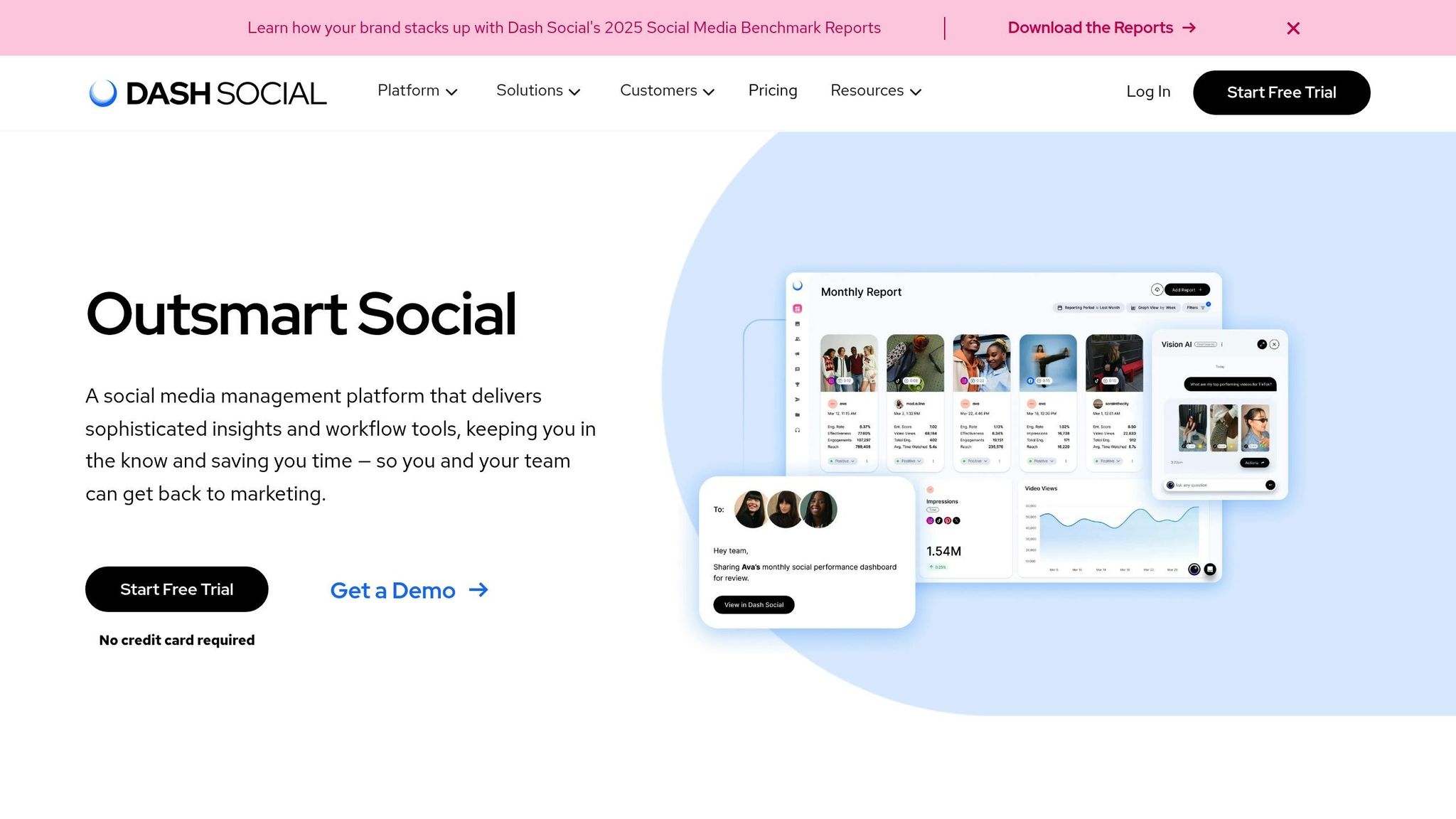
Dash Social combines simplicity with powerful features, making it a favorite for marketers who want both management and analytics in one platform. It stands out for its AI-driven insights, offering a clear picture of how your content performs across various channels.
With real-time analytics, content scheduling, and tools for managing user-generated content, Dash Social is an all-in-one solution. Its intuitive interface and strong customer support make it accessible for teams of all sizes, especially small to medium-sized businesses that want a straightforward yet effective tool.
Hootsuite

Hootsuite is a go-to platform for businesses that need comprehensive social media management and analytics. It integrates seamlessly with multiple platforms and offers three pricing tiers:
- Standard: $99/month (billed annually)
- Advanced: $249/month (billed annually)
- Enterprise: Starting at $15,000/year
Hootsuite shines in scheduling and team workflow management, earning high user ratings for post scheduling (4.7/5), multi-account management (4.6/5), and content management (4.5/5). Its overall rating sits at 4.5 stars, with a value-for-money score of 4.1 out of 5.
"Hootsuite really does offer the best value for investment." – Andrew L., Director Digital and Video, Media Production
However, larger teams may find the costs challenging. As Ivan M., Manager in Financial Services, puts it:
"Hootsuite is a fantastic tool with excellent data, however the cost for teams is a little high."
Sprout Social

Sprout Social is packed with advanced analytics, sentiment analysis, and competitor benchmarking, making it a strong contender for enterprise-level users.
Its sentiment analysis tools help brands understand audience emotions and detect potential issues early. Competitive benchmarking allows businesses to measure their performance against industry leaders, while team collaboration features ensure consistency across campaigns. With custom reporting, cross-platform attribution, and detailed audience demographic data, Sprout Social is ideal for companies that need in-depth analytics to guide their strategies.
Iconosquare
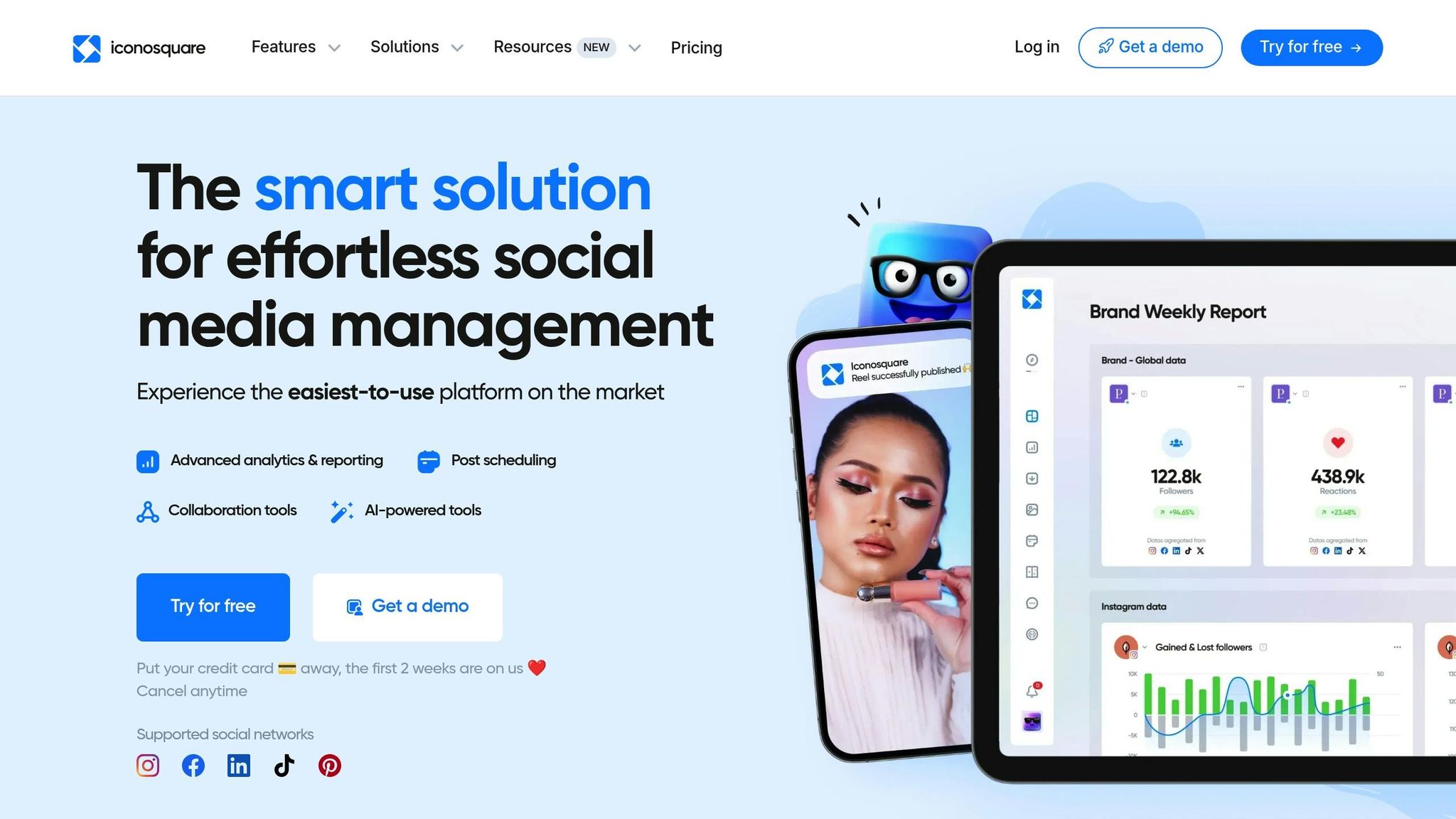
If your focus is on visual platforms like Instagram and TikTok, Iconosquare is a perfect fit. It offers detailed analytics tailored to visual content, including performance insights for stories, IGTV, and Reels on Instagram.
For TikTok, the platform provides data on trending hashtags, best posting times, and content performance patterns shaped by the app's algorithm. Iconosquare also excels in hashtag analysis, helping users track and optimize their tags over time. Its competitor analysis tools further support brands in refining their visual strategies.
Brandwatch

Brandwatch is built for large-scale campaigns and enterprise-level needs, offering powerful tools for social listening, competitive benchmarking, and influencer marketing. Its solutions cover Consumer Intelligence, Social Media Management, and Influencer Marketing, with pricing that scales from standard to enterprise levels.
The platform’s social listening capabilities monitor brand mentions, sentiment, and conversations across the web, helping brands stay on top of their reputation and emerging trends. Competitive benchmarking tools provide insights into industry trends and competitor performance, while the Consumer Intelligence feature analyzes audience behavior and preferences to refine messaging and product strategies. For influencer marketing, Brandwatch identifies potential partners, tracks their performance, and measures ROI on collaborations.
Additional Tools Overview
Beyond these major players, several other tools cater to specific needs, offering tailored solutions for businesses of all sizes:
- Buffer: A budget-friendly option with a simple interface, ideal for small to medium businesses needing essential analytics.
- Later: Focuses on visual planning and content management for Instagram and TikTok, with a visual content calendar to keep your brand aesthetic consistent.
- Sendible: Offers white-labeling and customizable reporting, making it perfect for agencies managing multiple clients.
- Sprinklr: A robust platform for enterprise users, combining customer experience management with advanced analytics.
- Zoho Social: Designed for beginners, it consolidates social media management into an easy-to-use dashboard.
- Loomly: Known for its scheduling and content calendar features, along with built-in content suggestions to boost engagement.
- SOCi: Tailored for multi-location businesses, making it a great choice for franchises.
Other noteworthy tools include Vista Social (user-friendly), Agorapulse (team collaboration), CoSchedule (content marketing integration), Socialbakers (AI-powered insights), Mention (real-time monitoring), Keyhole (hashtag tracking), and Quintly (competitive analysis).
Each tool serves a specific purpose, from affordable options for small businesses to platforms designed for the complex needs of large enterprises. Choosing the right one depends on aligning your goals with the features that best support your social media strategy.
sbb-itb-5be333f
Tool Features and Benefits Comparison
Choosing the right social media analytics tool becomes easier with a clear side-by-side comparison. Below, we’ve outlined the key features, pricing, and ideal use cases for some of the most popular platforms, helping you decide which one suits your needs best.
| Tool | Supported Platforms | Key Analytics Features | Pricing (Monthly) | Best Use Case |
|---|---|---|---|---|
| Hootsuite | All major platforms | Real-time monitoring, sentiment analysis, competitive benchmarking | Pricing available on request | Comprehensive management with strong team workflows |
| Sprout Social | All major platforms | Sentiment analysis, competitor benchmarking, cross-platform attribution | Standard: $249/seat; Professional: $399/seat; Advanced: $499 | Enterprise-level users needing advanced analytics |
| Iconosquare | Instagram, Facebook, X, LinkedIn, TikTok | Visual content analytics, hashtag analysis, Stories/Reels insights | Launch: $39; Scale: $83; Excel: $139 | Visual-first brands focusing on Instagram and TikTok |
| Brandwatch | All major platforms + web monitoring | Social listening, consumer intelligence, influencer marketing | Starting at $800 | Large-scale campaigns and enterprise social listening |
| Buffer | Limited platforms (Instagram, Twitter focus) | Basic analytics, engagement tracking | Free tier available; Essentials: $5/channel; Team: $10/channel | Small businesses needing budget-friendly basics |
| Later | Instagram, Facebook, TikTok, Pinterest | Visual content calendar, best time optimization | Starter: $25; Growth: $45; Advanced: $45 | Visual content planning and scheduling |
| Sendible | Facebook, Instagram, LinkedIn, YouTube, TikTok, X | White-labeling, customizable reporting, client management | Creator: $29; Traction: $99; Scale: $199; Advanced: $299; Enterprise: $750 | Agencies managing multiple clients |
| Zoho Social | All major platforms | Beginner-friendly dashboard, basic reporting | Standard: $15/brand; Professional: $40/brand; Premium: $65/brand | Beginners and small teams |
The pricing spectrum reflects the wide range of features and capabilities each tool offers. For example, Buffer stands out as a budget-friendly option, offering a free tier and affordable plans, making it a go-to for solopreneurs or small businesses. On the other hand, Brandwatch’s starting price of $800 per month signals its focus on enterprise-level users who need in-depth social listening and analytics.
Platform compatibility is another key factor. Tools like Hootsuite, Sprout Social, and Brandwatch cover all major networks, making them versatile for broad strategies. Meanwhile, Iconosquare hones in on visual platforms like Instagram and TikTok, providing specialized insights for brands prioritizing these channels. Sprout Social, recognized as G2’s #1 Overall Software Product for 2024, stands out for its robust features like sentiment analysis and competitive benchmarking.
Team size and workflow requirements also play a significant role. Sendible’s white-labeling and client management features make it ideal for agencies handling multiple accounts. For those with smaller teams or less complex needs, Zoho Social offers an easy-to-use dashboard at a lower cost. It’s not just about the monthly fees - value comes from how well the tool aligns with your specific goals.
Specialized tools can also shine in niche areas. For instance, Keyhole focuses on hashtag tracking with campaign-based pricing starting at $100, while Mention offers real-time monitoring beginning at $49 per month. These features are particularly useful for brands focused on reputation management or campaign-specific insights.
How to Choose the Right Analytics Tool for Your Social Media Strategy
When selecting a social media analytics tool, it's important to align your choice with your business goals and priorities. The right tool should provide insights that help you make informed decisions and improve your performance across platforms.
Start with your business goals. Determine what you aim to achieve with your social media strategy. Are you focused on managing your brand’s reputation? If so, look for tools that offer strong sentiment analysis and real-time monitoring. If driving conversions is your main objective, prioritize platforms that provide detailed campaign analytics and support for tracking results across multiple platforms.
Check platform compatibility and integration. Make sure the tool supports the social media channels where your brand is active. It should also integrate seamlessly with your existing marketing tools, such as your CRM, email marketing software, or content management system. This integration is crucial for consolidating data and gaining a clear view of your performance across multiple platforms.
Consider your team’s size and expertise. Large teams with dedicated social media professionals may benefit from advanced platforms with complex features. On the other hand, smaller teams might prefer user-friendly tools that focus on essential functions without overcomplicating things.
Think about your budget and trial options. Beyond the subscription cost, account for any additional expenses like premium features, extra user licenses, or training. Many tools offer free trials or demos - take advantage of these to explore how easy it is for your team to use the platform, customize dashboards, generate reports, and extract meaningful insights.
Real-time analytics are a must. Tools that provide immediate alerts for shifts in engagement or unexpected trends can help you respond quickly to opportunities or address potential issues before they escalate.
Look for customization and scalability. Choose a tool with flexible reporting options and the ability to grow with your business. Whether it’s adding more team members or managing additional social accounts, the platform should adapt to your needs without causing disruptions.
To streamline your search, consider resources like the Top SEO Marketing Directory. This directory highlights leading analytics tools and services, making it easier to find solutions that fit your social media strategy while complementing SEO and content optimization efforts.
Conclusion
By 2025, social media analytics tools have become essential for marketers navigating the ever-evolving digital world. With growing pressure to maximize social media investments and prove measurable returns, brands are turning to data-driven strategies to stay ahead.
These advanced tools do more than just track likes and shares - they transform engagement metrics into meaningful insights. This shift has fueled the rapid growth of the global social media analytics market, which is expected to jump from $17.39 billion in 2025 to an estimated $51.25 billion by 2029. The trend underscores the increasing reliance on analytics to not just measure performance but also shape marketing strategies.
For marketers, the challenge lies in turning raw data into actionable insights that create a competitive edge. Finding the right analytics solution is a critical step in this process. Platforms like the Top SEO Marketing Directory offer a curated list of analytics tools to help marketers align their choices with strategic goals and broader digital marketing initiatives.
Effective analytics drive ROI, provide deeper audience understanding, and enable quick adjustments to strategies. In a digital world where authenticity and informed decisions define success, selecting the right analytics platform isn’t just a tactical move - it’s a cornerstone for long-term growth in an increasingly competitive environment.
FAQs
What should I consider when selecting a social media analytics tool for my business in 2025?
When selecting a social media analytics tool for your business in 2025, start by pinpointing your primary objectives. Are you focused on tracking engagement, measuring conversions, understanding audience behavior, or keeping tabs on competitors? Knowing your goals will help you zero in on the right tool.
Seek out platforms that provide detailed reporting, real-time data, and customizable insights that fit your specific needs. Take advantage of free trials or demos to get a feel for how the tool works and ensure its features align with your workflow. It's also smart to choose tools that integrate smoothly with your existing systems and deliver clear, actionable insights to help refine your social media strategy.
What are the advantages of using a single dashboard for social media analytics?
Using one dashboard for social media analytics gives you a clear, all-in-one view of how your content is performing across various platforms. This setup simplifies tracking important metrics, spotting trends, and making informed decisions quickly.
It also offers valuable insights into your audience's behavior on different channels, helping you create more focused and impactful campaigns. Plus, by bringing all your data into one place, it saves time, reduces effort, and helps you use your resources more efficiently - potentially boosting your return on investment (ROI).
How can sentiment analysis and audience insights improve my social media strategy?
Understanding how your audience feels about your brand, products, or campaigns can completely reshape your social media strategy. Sentiment analysis digs into emotional responses - positive, negative, or neutral - giving you the tools to fine-tune your messaging and build stronger connections with your audience.
These insights go beyond surface-level metrics. They help you tackle concerns promptly, boost engagement, and strengthen your brand's reputation. By using a data-driven approach, you can craft strategies that hit the mark in 2025, keeping your campaigns relevant and impactful.
